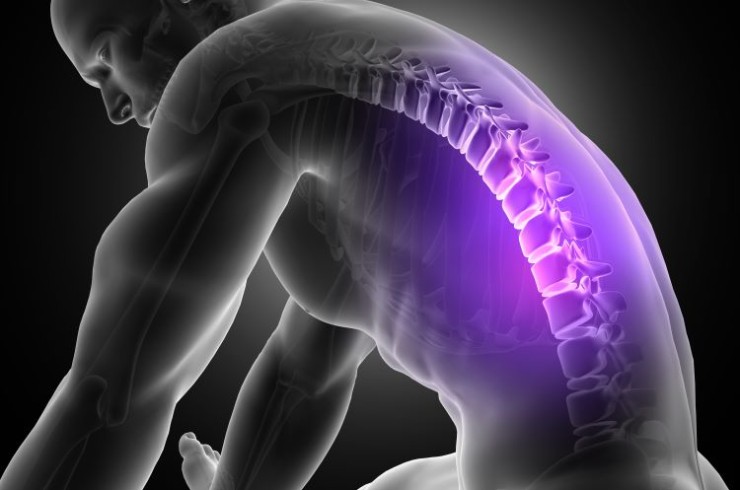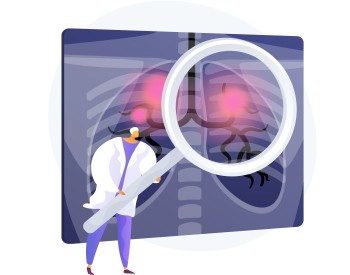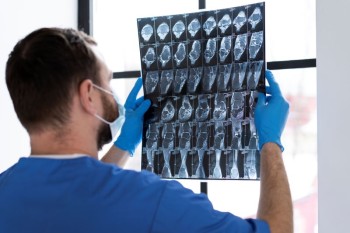
In the ever-evolving landscape of medical diagnostics, the 3D CT Dorsal Spine Scan has emerged as a groundbreaking technology, bringing unparalleled precision to the imaging of the human spine.
3D CT Dorsal Spine in India with Cost
3D CT Dorsal Spine Scan in Detail: Revolutionizing Medical Imaging
Introduction
In the ever-evolving landscape of medical diagnostics, the 3D CT Dorsal Spine Scan has emerged as a groundbreaking technology, bringing unparalleled precision to the imaging of the human spine. This article is dedicated to unraveling the complexities surrounding this cutting-edge procedure, exploring its nuances, applications, and the transformative impact it has on the field of medical imaging.
Understanding 3D CT Imaging
The journey into understanding 3D CT Dorsal Spine Scans begins with grasping the fundamentals of 3D CT imaging technology. This technology has undergone a remarkable evolution, from its inception to the sophisticated systems we have today. It stands at the forefront of medical imaging, providing detailed three-dimensional views that were once unimaginable.
The Procedure Unveiled
Curiosity often surrounds the procedure of a 3D CT Dorsal Spine Scan. To demystify the process, imagine it as a detailed snapshot of the spine. Patients lie on a table that moves through a doughnut-shaped machine, capturing cross-sectional images from various angles. The result is a comprehensive 3D view, allowing healthcare professionals to assess the spine's structure and identify abnormalities.
Concerns about radiation exposure during CT scans are common. However, modern CT machines are designed with advanced technologies to minimize radiation doses while maintaining image quality. It's essential to address these concerns to reassure patients and foster a better understanding of the procedure.
Applications in Medical Diagnosis
The true power of 3D CT Dorsal Spine Scans lies in their diagnostic accuracy. These scans play a crucial role in identifying and assessing spine-related conditions such as herniated discs, fractures, tumors, and spinal deformities. The intricate details provided by 3D imaging significantly contribute to more precise diagnoses, enabling healthcare professionals to tailor treatment plans effectively.
Advantages Over Traditional Imaging
Traditional imaging methods, such as X-rays and 2D CT scans, have their limitations. 3D CT Dorsal Spine Scans, on the other hand, offer a leap forward in terms of precision and clarity. By providing three-dimensional images, healthcare providers gain a more comprehensive understanding of the spine's anatomy, leading to improved diagnostic accuracy.
Ensuring Patient Comfort and Safety
Safety is a paramount concern when it comes to medical procedures. Addressing radiation exposure worries, modern CT machines incorporate safety measures to minimize radiation doses. Additionally, ensuring patient comfort during the scan is vital for a positive overall experience. Radiologic technologists and healthcare staff are trained to prioritize patient well-being throughout the process.
Special Considerations for Specific Cases
While 3D CT Dorsal Spine Scans are highly effective for many conditions, there are cases where alternative imaging methods might be more suitable. Individuals with certain health conditions or those who are pregnant may require special considerations. It's crucial to assess each patient's unique situation to determine the most appropriate imaging approach.
Interpreting 3D CT Scan Results
Understanding the results of a 3D CT Dorsal Spine Scan requires expertise. Radiologists carefully analyze the images to identify abnormalities, assess the extent of conditions, and guide treatment decisions. Patients can benefit from a discussion with their healthcare providers to comprehend the implications of the scan results.
Real-Life Cases and Success Stories
The impact of 3D CT Dorsal Spine Scans on patient outcomes is profound. Real-life cases and success stories highlight instances where the detailed imaging provided crucial information, leading to accurate diagnoses and successful treatment plans. These stories underscore the transformative potential of this advanced imaging technology.
The Future of 3D CT Dorsal Spine Scans
As technology advances, so does the potential for further innovations in 3D CT imaging. Ongoing research aims to enhance the technology, potentially reducing scan times, improving image resolution, and expanding its applications. The future holds promise for even more advanced and patient-friendly 3D CT Dorsal Spine Scans.
Patient Education and Awareness
Providing patients with information about 3D CT Dorsal Spine Scans is crucial. Well-informed patients are more capable of making informed decisions regarding their healthcare. Raising awareness about the advantages, process, and aspects related to 3D CT scans promotes a collaborative relationship between healthcare providers and patients.
Costs and Insurance Coverage
While the value of 3D CT scans in medical diagnostics is undeniable, understanding the associated costs and insurance coverage is equally important. Patients should be informed about potential out-of-pocket expenses and verify insurance coverage to navigate the financial aspects seamlessly.
Common Misconceptions
Misconceptions can hinder the acceptance and understanding of 3D CT Dorsal Spine Scans. Addressing common myths, such as exaggerated radiation risks or misconceptions about scan duration, helps provide clarity and dispel unfounded concerns.
Comparison with Other Imaging Techniques
Comparing 3D CT Dorsal Spine Scans with alternative imaging techniques like MRI and traditional X-rays is essential for understanding their respective strengths and limitations. Each method has its unique advantages, and the choice depends on the specific diagnostic requirements of the patient.
Conclusion
In
conclusion, the 3D CT Dorsal Spine Scan stands as a testament to the remarkable
advancements in medical imaging. From its detailed procedure to real life
success stories and the potential for future innovations, this article aimed to
provide a comprehensive understanding of this transformative technology. As we
continue to embrace progress in healthcare, 3D CT Dorsal Spine Scans hold a
pivotal role in shaping the future of diagnostic precision.
FAQs (Frequently Asked Questions)
1. What is the average duration of a 3D CT Dorsal Spine Scan?
The duration of a 3D CT Dorsal Spine Scan typically ranges from 15 to 30 minutes, depending on the complexity of the examination and the specific area being scanned.
2. Can pregnant individuals undergo a 3D CT Dorsal Spine Scan?
While radiation exposure is minimized, pregnant individuals are generally advised to avoid unnecessary medical imaging. Alternative imaging methods may be considered, and consultation with a healthcare provider is recommended.
3. How frequently are 3D CT scans recommended for monitoring chronic spine conditions?
The frequency of 3D CT scans for monitoring chronic spine conditions varies based on the specific condition and the individual's medical history. Healthcare providers tailor imaging plans to each patient's unique needs.
4. Are 3D CT Dorsal Spine Scans covered by insurance?
Insurance coverage for 3D CT Dorsal Spine Scans depends on the specific insurance plan and the medical necessity of the procedure. Patients are encouraged to check with their insurance providers to understand coverage details.
5. Is there any discomfort associated with undergoing a 3D CT Dorsal Spine Scan?
The procedure is generally painless. Patients may experience a sense of confinement during the scan, but the radiologic technologists are trained to ensure patient comfort throughout the process.
6. Are there any age restrictions for undergoing a 3D CT Dorsal Spine
Scan?
There is no strict age restriction for 3D CT Dorsal Spine Scans. The appropriateness is determined case by case, considering the patient's health condition and the necessity of the procedure.
7. Can 3D CT scans detect all types of spine-related conditions?
While 3D CT Dorsal Spine Scans excel in detecting various spine-related conditions, some specific cases may require additional imaging methods or clinical assessments for a comprehensive diagnosis.
8. Is sedation necessary for a 3D CT Dorsal Spine Scan, especially for children?
Sedation is rarely necessary for adults, and most patients can undergo the scan without it. However, for pediatric patients or individuals with severe anxiety, healthcare providers may consider sedation to ensure a successful scan.
9. What preparation is required before a 3D CT Dorsal Spine Scan?
Typically, no special preparation is required. Patients may be asked to remove metal objects and wear a hospital gown. It's essential to inform the healthcare team about any existing medical conditions, allergies, or pregnancy.
10. Can individuals with claustrophobia undergo a 3D CT Dorsal Spine Scan comfortably?
The open design of modern CT machines minimizes the feeling of confinement, making it more tolerable for individuals with mild claustrophobia. Healthcare providers can offer additional support to help patients feel more at ease during the procedure.
(0)
Login to continue



